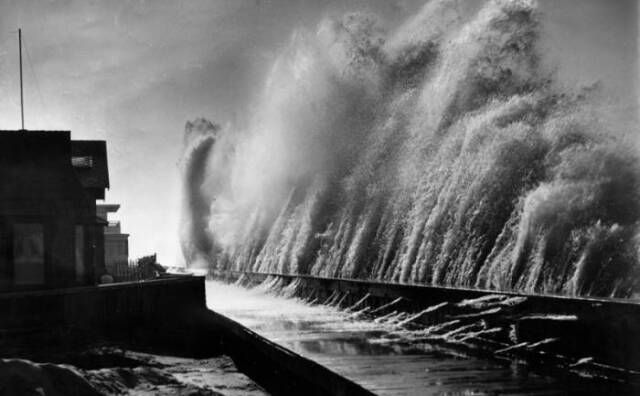One drunken night in the late 1930s, Garson Kanin, who wrote or directed romantic classics including My Favorite Wife, Born Yesterday, and Adam’s Rib, found himself in a sexual farce more far-fetched than any he had ever dared dream up.
According to Kanin’s Hollywood: A Memoir, that night the notoriously predatory talent manager Johnny Hyde (who later managed a young Marilyn Monroe) took an unsteady Kanin to a stately Greek Revival mansion high in the Hollywood Hills above Sunset Boulevard. There he was introduced to an elderly woman named “Mae,” who looked and acted exactly like Mae West. The madam of the joint, “Mae” ran a stable of “movie stars,” including “Barbara Stanwyck,” “Carole Lombard,” “Myrna Loy,” “Vivien Leigh,” and “Ginger Rogers."
These look-a-likes were said to take their jobs seriously, reading the trades every morning to accurately talk shop with their Hollywood clients. According to Kanin, it took an army of professionals to turn these sex workers into believable facsimiles of Hollywood’s biggest stars, thus erasing their own personhood in the process. Kanin writes:
The basement contained the makeup, hairdressing, and wardrobe departments. The wardrobe mistress turned out to be a dear Jewish lady from the Boyle Heights section, the mother of an assistant director who had spent years in the wardrobe departments of Metro, and Twentieth… and had many valuable contacts. Often, she would buy clothes from the studios, then remodel them to fit the girls.
So uncanny were the results, according to Kanin, that the husband of one movie star frequented his busy wife’s brothel double so that he was not technically “cheating.” In his book Life Is Too Short, Mickey Rooney also references a brothel introduced to him by Milton Berle, filled with sexy imitations of the stars.
“It was amazing,” Rooney writes. “Every girl looked like a film star. Clara Bow, Jean Harlow, Greta Garbo, Norma Shearer. They were dead ringers.”
According to The Fixers: Eddie Mannix, Howard Strickling and the MGM Publicity Machine by film historian E.J. Fleming, “Mae” was in fact Billie Bennett, an actress at MGM, who allegedly had help from the studio- who used her establishment to entertain clients. There is a case for MGM being involved at least tangentially in prostitution. According to Marc Eliot’s Jimmy Stewart: A Biography, MGM operated a brothel next to their Culver City studio, which catered to male stars’ particular tastes. Suspicious of Stewart’s low-key life, a studio executive told him to prove his “manhood” at the brothel. “Get your ass over there,” he said, “and get those rocks off with at least two of those broads.”
Whatever the case, these alleged studio-sponsored brothels — a symptom of a good-old-boy system which often exploited young, vulnerable women who had come to California to break into the entertainment industry —- have become Hollywood lore.
“The top-dollar establishments operated out of houses on residential streets in the hills above the Sunset Strip,” explains Jon Ponder, historian and co-founder of the West Hollywood History Center. “These were by appointment only. The houses usually had no more than four bedrooms, and, just like today, parking on the narrow, hillside streets was dicey. The madams were careful not to annoy the neighbors.”
Madams make the A-list
According to historian Sherry Monahan, author of California Madams, the madams who rose to the A-list had often been the victims of trafficking and exploitation themselves. A few of them became famous, just like the celebrities they catered to.
One of the most famous Hollywood madams was the whip-smart Lee Francis, who ran a series of brothels throughout LA in the 1920s and ‘30s. In her memoir, Call House Madam (ghostwritten by Serge G. Wolsey), Francis, going by the name of Beverly Davis, brags about the night the wife of a movie star spotted her at a premiere at Grauman’s Chinese Theater.
“Is that Beverly Davis?” the woman yelled. “I’ll trade every autograph in the place for hers!”
-
It's gonna be Yankees v the Boys in Blue
-
Nonprofit's launching fundraiser to keep it afloat
-
USC study documents what residents want from trees
It has long been rumored that Francis ran a massive brothel — dubbed the “House of Francis”— out of Piazza del Sol on Sunset Boulevard (now home to Katana), where she lived for a brief time around 1937. “She did entertain there, and there may even have been assignations in the bedrooms, but it would have been very limited,” Ponder says.
According to Ponder, Francis in fact operated her brothels in a series of leased mansions where activities including cards, swimming, billiards, and tennis were available along with sex work. He believes she ran houses at various times on Bedford Drive, Kings Road, Norton Avenue, and the 8200 block of Sunset Boulevard.
Fleming counts Errol Flynn, John Gilbert, and Clark Gable among Francis’ Hollywood johns. Another regular was allegedly Spencer Tracy (who famed Sunset Blvd. gas station pimp Scotty Bowers also pegged as a frequent customer).
“There’s a story that Spencer Tracy, a notoriously problematic imbiber, was a regular at Lee Francis’ on the Strip,” Ponder says. “One night he left there so blottoed that he accidentally drove his car over the curb leaving it perched off the side of the hill. When the police came to help, Tracy became so belligerent that they had to handcuff him and strap his legs down.”
Francis’ rented houses of assignation so fit into the Hollywood landscape that there is a possibly apocryphal tale of the Earl of Warwick knocking on the door of the palatial mansion of movie star Kay Francis one night. Believing it only right to entertain royalty, she did her best to make him at home. According to Francis biographer Scott O’Brien, the confused Earl finally asked pleadingly, “You’re delightful Madam Francis, but would you mind bringing in the girls?”
After quitting the business in the late 1930s, Lee Francis would claim to be the soul of discretion — although she would write more than one autobiography, including Ladies On Call, in which she claimed Jean Harlow was a frequent customer, but that Clark Gable was just a good friend.
However, there was a truly dark side to the often violent, always misogynistic Hollywood sex trade, which many women entered through force as a last resort.
Crumbling facades

In his masterful memoir Bring on the Empty Horses, movie star and raconteur David Niven tells the story of his friend “Mary Lou,” a free-spirited struggling actress who becomes a sex worker in a cream-colored mansion in the North Hollywood hills. According to Niven, as a lark he went to visit this high-end brothel, which was overseen by a haughty “baroness,” who went to absurd lengths to display an air of propriety.
“The girls will be seated in those three chairs,” she told him. “If you feel you would like to have a private word with one of them before you go, signal the fact to me by turning the handle of your teacup in her direction and I will see that she stays after the others leave.”
However, the façade was soon broken when Mary Lou began to cry in embarrassment. A short while later, Niven writes, the house was abandoned when it was raided by the gangster Mickey Cohen, a not uncommon occurrence.
The fate of “Mary Lou” and thousands of other Hollywood hopefuls meant that any spot in L.A. could become a makeshift brothel — or so city leaders believed. This particularly worried librarians at the Carnegie Library on Hollywood and Ivar.
“They had a basement and the librarians, they really began to worry because there were all these young women spending their days downstairs reading scripts,” says Hollywood historian Gregory Paul Williams. “And the librarians were like, ‘these women are going to be imperiled for exploitation.’”
The Black Widow(s)
One of the most notorious predators of the 1930s was Ann Forrester (or Ann Forst), a ruthless madam known as the “Black Widow.” Stories of her “little black book” titillated Hollywood during her trial in 1940. According to historian Annie Murphy of LAPL Blog, her employees testified and “were quick to turn against Forst, revealing sordid details of their job including being forced to service several men a day, not being allowed to rest when ill, and only getting half their promised pay.”
Brenda Allen Burns was one of the sex workers who bravely testified against Forrester. Shortly after the trial, Brenda began to emulate her former boss and quickly set out to become an even more notorious madam.
“In the years after the trial, she dropped the name ‘Burns’ and transformed herself into a stylish and sophisticated player in the Hollywood sex trade,” Ponder says. “By 1946, she was raking in cash from a lucrative outcall business she operated out of an anonymous apartment building on Fedora Street, two blocks south of the Ambassador Hotel.”
Allen specifically catered to Hollywood bigwigs, embedding herself within the industry. “Brenda was a master of the art of marketing with discretion,” Ponder explains. “For example, she placed ads in the back of the AMPAS Players Directory that featured herself in two glamorous head shots, along with her name and the number of her telephone exchange. It was easy to remember: HO-2555.”
In careful, precise handwriting, she had recorded the sexual services each of her rich and famous clients had paid for, dates of assignations and their costs.
Allen would control numerous private house brothels above the Sunset Strip on both Cory Avenue and Miller Place, and controlled an entire bungalow court on Catalina Street. She was finally arrested in May 1948, when one of the houses she operated on Harold Way above Sunset Boulevard was raided.
During the raid, a black box was discovered, featuring the names of hundreds of clients. “Police recovered a box containing her client files on index cards. In careful, precise handwriting, she had recorded the sexual services each of her rich and famous clients had paid for, dates of assignations and their costs,” Ponder says.
“Names Found in Vice Raid Set Hollywood Agog,” the Los Angeles Times blared. A photo of a policeman sifting through the index cards taunted Allen’s worried patrons. Ponder explains:
“At Brenda’s trial, the judge reviewed the cards one by one … When he finished, he addressed the court. He’d seen ‘names of dignitaries of the screen and radio and executives of responsible positions in many great industries,’ he said. ‘Publication of their names would be ruinous to their careers and cause them great public disgrace.’ The judge ordered the files sealed, permanently. They were likely destroyed.”
The unmasking of Brenda Allen would implicate Sgt. Elmer Jackson, her corrupt partner in the LAPD, and usher in the reign of the controversial reformer Chief William Parker. But Hollywood heavyweights stayed suspiciously safe.
“Releasing the names would have been a public-relations disaster for the movie industry, which in those days was the biggest moneymaker in the state,” Ponder says. “The industry had every reason to do whatever it took to clean up the mess. Whatever they did must have worked. None of the names was ever released.”
The fallout from Allen’s trial seemed to signal the death knell of the exploitative Hollywood supported brothel — but you can’t keep the world’s oldest profession down. In July 1951 (before Allen was even released from jail), another A-list brothel was busted on Schuyler Drive in Beverly Hills. The walls were papered with autographed headshots of celebrities, and a black book discovered was filled with names from the film industry. It conveniently disappeared.












